Located just 100km south of Barcelona on Spain’s Costa Daurada (golden coast) Tarragona is literally bursting with history. The Roman city of Tarraco was capital of Hispania Tarraconensis and was one of the most important cities in the Roman Empire.
The most important historical sites are located in the city centre and Tarragona is one of the most popular day trips from Barcelona.
If you have time, I recommend that you spend at least one night here so that you can enjoy the city at a more relaxed pace and visit sites such as the Roman aqueduct which is located just outside the city.
Alternatively, you could use Tarragona as a base to explore the surrounding region.
What to see in Tarragona
- The Roman Amphitheatre
- The Roman Circus and Praetorium
- Devil’s bridge Roman aqueduct
- The archaeological museum
- The Local Forum
- The Provincial Forum
- Paleochristian Museum and Necropolis
- Tarragona Cathedral
- The archaeological walk
- The Medieval city centre
- Rambla Nova and the Balcó del Mediterrani
- Casa Castellarnau
- Modernista architecture
- El Serrallo and Tarragona harbour
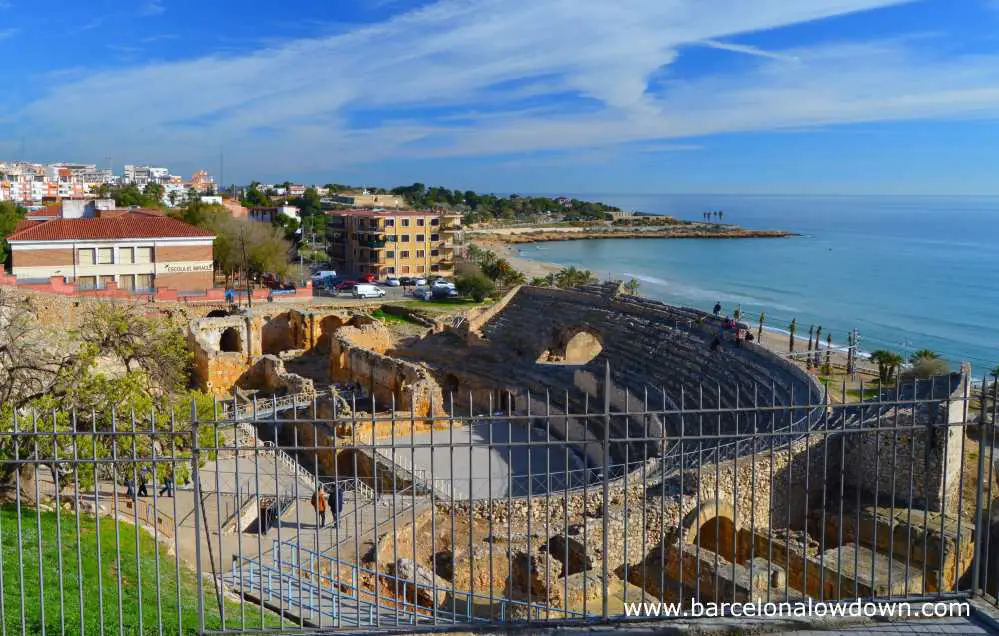
The Roman Amphitheatre
The best known of Tarragona’s 13 UNESCO listed Roman remains, the amphitheatre was cut into the hillside leading up from the beach at the start of the second century AD and used to stage Gladiator contests and public executions.
In 259 AD, during the persecution of Christians, the city’s archbishop Fructuosus and his 2 deacons were burned alive here. Years later, when Christianity became the official religion of the Roman Empire, a basilica dedicated to the 3 martyrs was built in the middle of the by then disused amphitheatre.
In the 12th century, the Visigoth basilica was replaced by a Romanesque church, the remains of which can be seen today.
Entry to the amphitheatre costs €3.30 or you can purchase the MHT pass which costs €7.50, more information below.
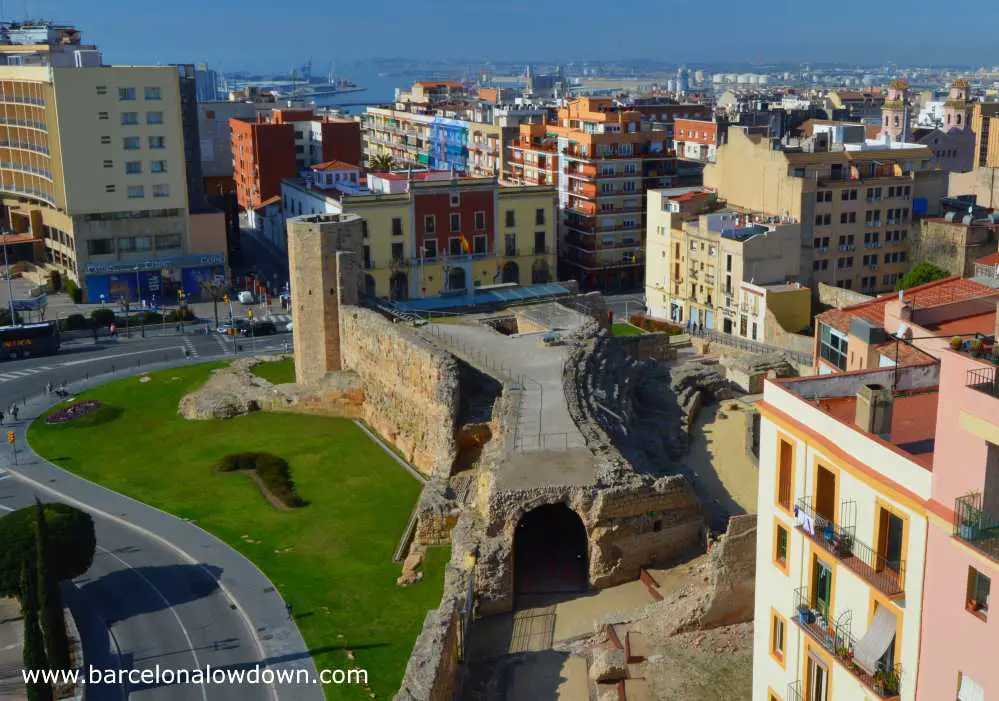
The Roman Circus and Praetorium
The Roman circus was a hippodrome built to stage chariot races, theatre and circus. The structure dates back to the first century AD and was 350m long by 115m wide with a seating capacity for 30,000 spectators.
Most of the circus now lies hidden beneath the medieval city centre and all that remains are sections of the walls and some of the tunnels which originally gave access to the stands but now run beneath the surrounding streets and buildings of the city centre.
The site includes the Praetorium tower which was once part of the Provincial Forum and which affords excellent Panoramic views of Tarragona.
Together with the archaeological museum, a visit to the Roman Circus will help you appreciate the size and importance of Tarraco during the times of the Roman empire.
Devil’s bridge Roman aqueduct
Located in an area of woodland 4km from the city centre, the Roman aqueduct (Pont de les Ferreres) can be reached by bus or on foot.
A testament to Roman engineering the aqueduct supplied water to Tarragona right up until the 18th century. More information here.

The archaeological museum
Tarragona’s small but interesting archaeological museum houses a collection of statues, mosaics tombstones and other objects used in daily life.
The entrance ticket also includes the Roman necropolis in the south of the city.
The Local Forum
Roman forums were market places surrounded by temples and public buildings. Tarragona’s forum local (local forum) was located in the residential part of the city (Catalan: Part baixa). The forum was excavated during the 1920s and you can see the remains of the basilica, cistern and several Corinthian columns.
The Provincial Forum
The Provincial forum dates back to the 1st century AD when Tarraco was the capital of the Roman province Hispania Tarraconensis. The forum covered a large part of what is now the medieval city centre including the site of Tarragona cathedral.
Today Plaça del forum is an attractive square surrounded by small bars and restaurants with tables where you can sit out side and enjoy a beer or leisurely meal. On Saturdays the square plays host to a lively food market with stalls selling fresh fruit and vegetables.
Paleochristian Museum and Necropolis
Roman cemeteries were located outside the city walls, often lining the roadside. Entry to the excavated Roman necropolis is included with the ticket for the archaeological museum
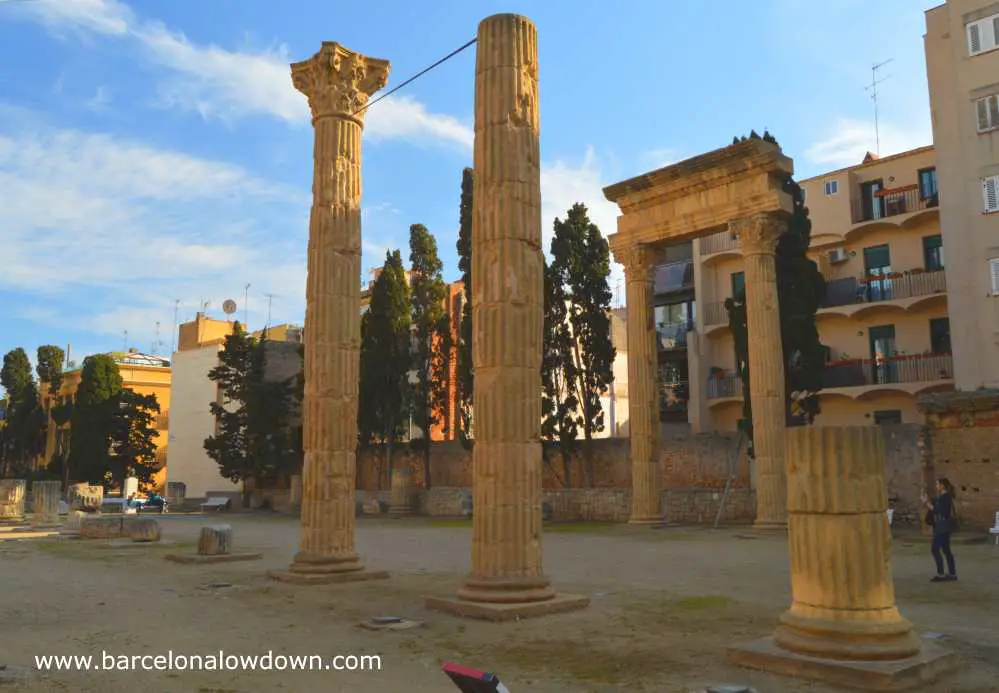
Tarragona Cathedral
The Cathedral of Santa Tecla was built during the 12th to 14th centuries on a site which had previously been occupied by a Roman temple dedicated to Emperor Augustus, a Visigoth Cathedral and a Moorish mosque.
The cathedral is a mixture of Romanesque and Gothic styles and contains a large collection of religious art including sculptures, paintings and textiles. Highlights include the carved Gothic façade and large stained glass rose window, the altar dedicated to Santa Tecla and the rectangular cloisters and gardens.
Entry to the Cathedral and museum costs; adults €5 students €4 OAPs/ children €3. Audio guides cost €2 and there are also guided tours available.
The archaeological walk (Roman walls)
The Roman walls which surrounded Tarraco were built during the second century BC, making them the earliest Roman construction outside of Italy.
During the 16th to 18th century an outer wall with pointed bastions was built to protect the city from artillery fire.
Today approximately 1.2km of the walls remain and have been restored and converted into gardens.
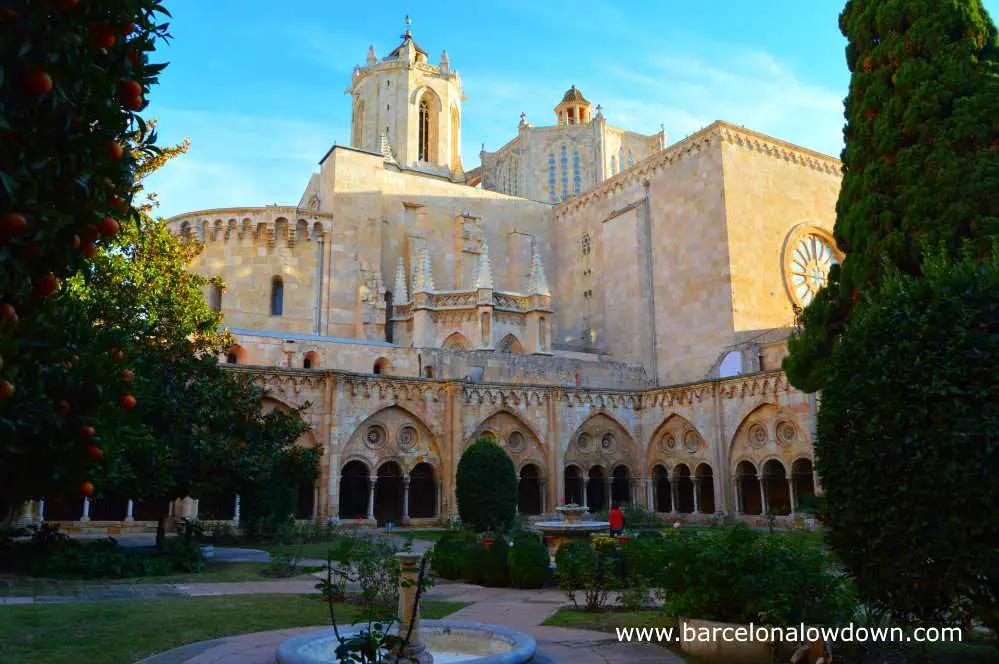
The Medieval city centre
The medieval city centre which surrounds Tarragona Cathedral is a labyrinth of narrow cobbled streets and shady plazas. It’s a delightful area to explore at a leisurely pace, stopping to enjoy a glass of vermouth, cup of coffee or cold beer as you soak up the atmosphere and try to imagine what it must have been like to live here during the middle ages or the times of the Roman Empire.
Rambla Nova and the Balcó del Mediterrani
Rambla Nova is a wide pedestrianised avenue which crosses Tarragona from the Plaça Imperial to the Balcó del Mediterrani. Relaxing and crowd free, the Rambla is an enjoyable place to walk, dotted with modernist buildings and statues including the Monument to Castells (human towers) and the statue of Roger de Lluria.
El Balcó del Mediterrani affords views of the Roman amphitheatre, the beach (Platja el Miracle) and the Mediterranean sea.
Local tradition says that the act of touching the characteristic iron railing brings good luck.

Casa Castellarnau
During the Middle Ages, Tarragona’s richest and most influential families built their homes and palaces on Carrer dels Cavallers in the Zona Alta (near the Cathedral). One such house is Casa Castellarnau which was built during the 15th century AD.
Now a museum, the house preserves features from different periods, including a 15th-century Gothic patio and staircase, a small Modernista kitchen and luxurious 18th-century living areas, which include a richly decorated ballroom with an impressive crystal chandelier.
Entrance to the museum costs €3 and is covered by the Tarraco pass (more information below).
Modernista architecture in Tarragona
Modernism is the Catalan equivalent of Art Nouveau. An artistic movement that coincided with the Industrial Revolution at the end of the 19th and the start of the 20th Century.
Although Tarragona doesn’t have any of the masterpieces which Barcelona is famous for (La Sagrada Família, Casa Batlló, La Palau de la Musica etc…) there are plenty of examples of modernista architecture dotted around the city.
There are 2 maps available at the city’s official tourist office listing a total of 78 buildings. Unfortunately, they aren’t open to the general public and can only be viewed from the outside.
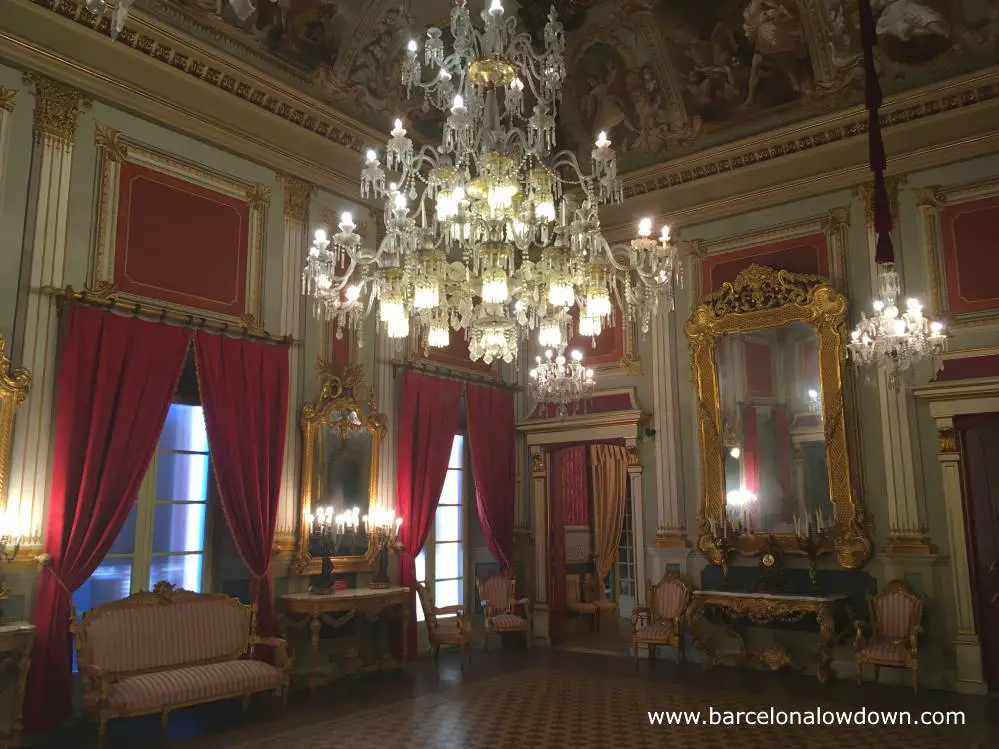
El Serrallo and Tarragona harbour
El Serrallo is the old fishermen’s neighbourhood located beside Tarragona harbour. The area is popular among locals who come to eat in the numerous seafood restaurants. It’s a pleasant area to explore, check out the fishing boats and people watch.
Attractions include the electric cranes which were used to load and unload ships, the historic harbour clock, the church of Sant Pere and the fishermen’s guild (now a restaurant).
There is also a small museum dedicated to the maritime history of Tarragona.
Brief history of Tarragona
Tarragona was first settled by the Iberians during the 5th century BC. In 218 BC during the Second Punic War the town was taken by the Romans who established a military base and port.
In 27BC Emperor Augustus travelled to Spain to oversee the conquest of Cantabria. Due to his poor health, Augustus preferred the milder Mediterranean climate of Tarraco and the city expanded rapidly.
For the following two centuries Tarraco was one of the largest and most important cities in Hispania.
After the fall of the Roman empire, the city was occupied by Vandals and Visigoths until it was conquered by the Umayyad Caliphate in 714 during the Moorish conquest of Spain.
The once important city, underwent a period of steady decline until the twelfth century when it became an ecclesiastical enclave. Several important religious buildings were constructed including Tarragona Cathedral which was built on the site of the Roman temple of Augustus.
During the seventeenth and eighteenth century, the history of Tarragona was marked by a series of epidemics, pirate attacks and three major wars (The Reapers War, The War of The Spanish Succession and The Peninsular War).
The nineteenth century was a period of prosperity when Tarragona slowly recovered from the ravages of war and its economy began to flourish. Most of the city’s defensive walls were torn down and the city expanded, connecting the Part Alta with the port area (El Serrallo). As building work took place, the remains of the Roman city were uncovered and Spain’s first Archaeological Museum was built to house them.
Tarragona once again suffered badly during the Spanish Civil War after which the city became more industrialized and its population once again grew. Today it is an attractive, modern city with a population of eight hundred thousand people.
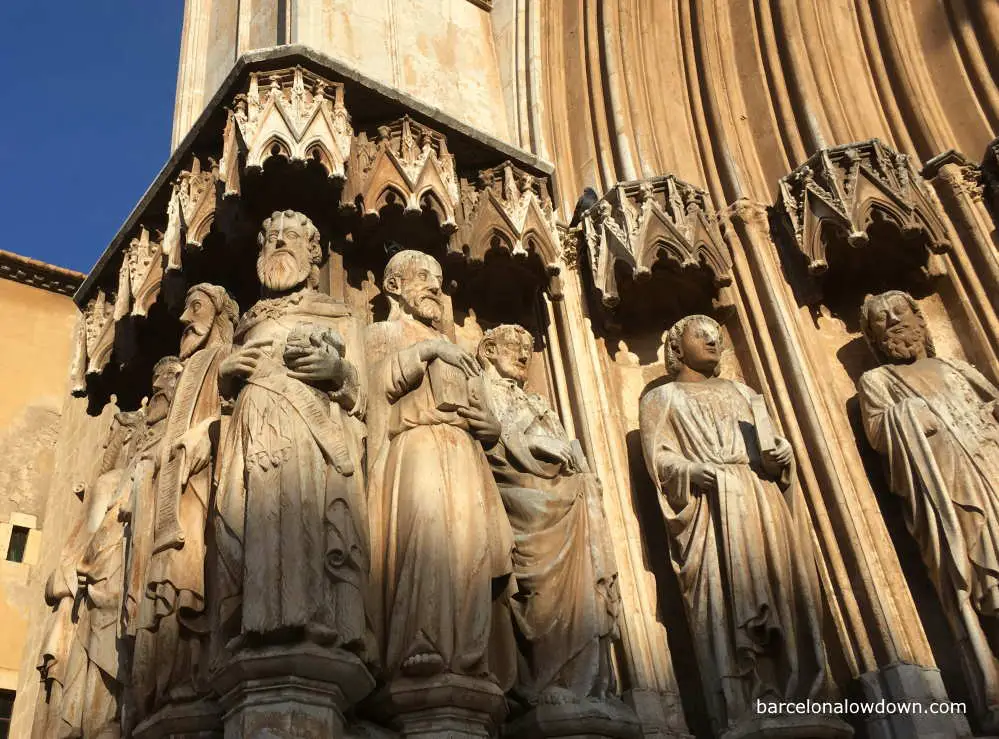
Tarragona festivals and events
Tres Tombs The feast day of Sant Anthony Abat (January 17th) is celebrated with a horse parade called the 3 turns (Catalan: tres tombs).
Carnaval In February Tarragona stages one of Spain’s largest carnival parades.
Dixieland festival One of the largest jazz festivals in Spain takes place in Tarragona during April.
Tarraco Viva Each summer during May, Tarragona celebrates it’s Roman heritage by staging a series of events including gladiator fights, processions and chariot races.
Corpus Christie This traditional Catholic festival is widely celebrated in Spain at the start of summer, dates vary from year to year.
Feast of St. John (Revetlla de Sant Juan) On the night of June 23rd Tarragona celebrates the summer solstice in style with fireworks, bonfires and parties which last until daybreak.
Santa Tecla Tarragona’s festa major in honour of the town’s patron saint, lasts for ten days either side of September 23rd. The celebrations include human towers, fire runs and processions of giants.
Concurs de Castells (human towers competition) This spectacular event takes place in Tarragona every other year in October. The next competition will be in 2018. Other human towers events take place throughout the year.
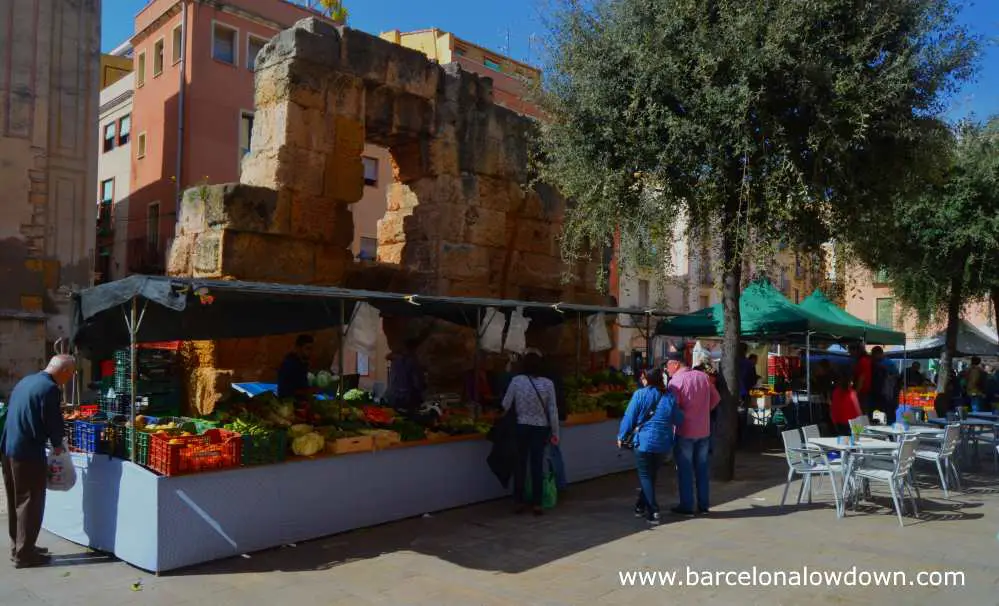
Beaches near Tarragona
Tarragona’s main beach is called Platja del Miracle. Although clean and sandy, it’s not particularly attractive and if you plan to spend the day at the beach it’s worth catching a bus to one of the other beaches nearby.
Platja Arrabassada
Approximately 10 minutes by bus from Rambla Vella, Arrabasada beach is wide and sandy and has a couple of Chiringuitos (beach bars /restaurants).
Buses numbers 8, 11 and 13 run from Rambla Vella to Tusset, a short walk from the beach.
Platja Savinosa
Five minutes further north by bus, Savinosa beach is similar to Platja Arrabassada although a little smaller.
Buses numbers 8, 11 and 13 run from Rambla Nova to Savinosa
Platja dels Capellans
Platja dels Capellans is a tiny cove just north of Savinosa beach which is often crowded at the weekend and during the summer.
Buses numbers 8, 11 and 13 stop at Cala Romana.
Platja Llarga
The largest, and most popular beach in the area, Platja LLarga (English: Long Beach) is a 2km long sandy beach which takes approximately 20 minutes to get to from Tarragona. A fifteen-minute bus ride followed by a 5-minute walk. Facilities include restaurants, a campsite and a sailing club. If you’ve rented a car, there’s a free car park next to the beach.
Buses numbers 8, 11 and 13 stop at Tennis, a five-minute walk from the beach.
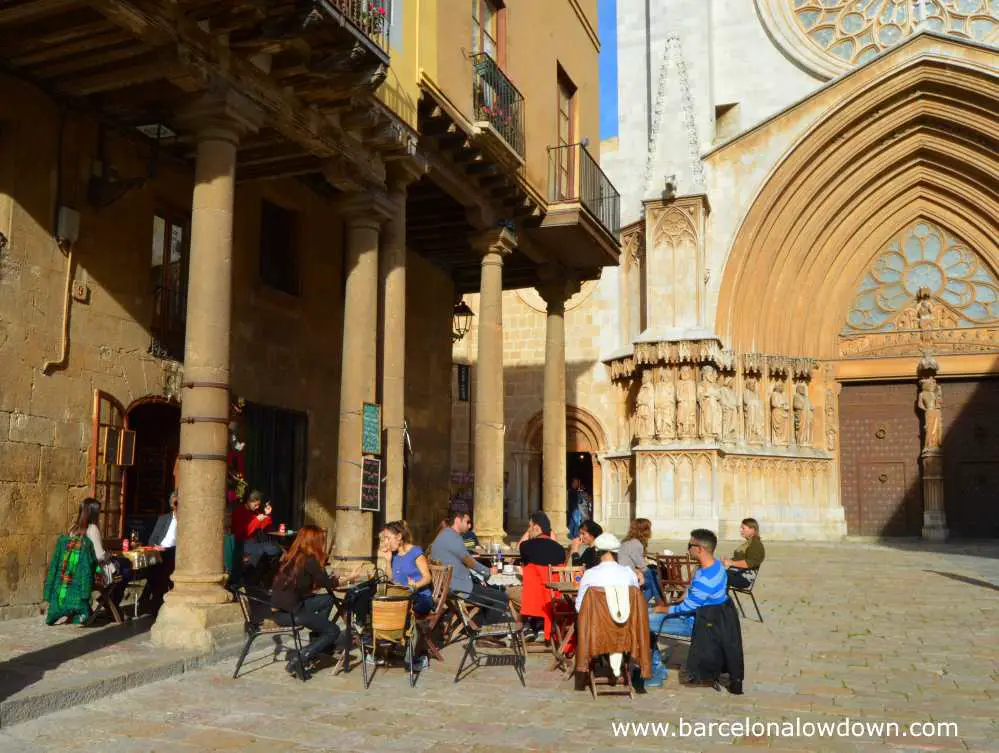
Places to visit near Tarragona
Devil’s bridge As mentioned above, in my opinion the Pont del diable aqueduct is one of the must sees when visiting Tarragona.
Tamarit castle This small castle perched on a headland was built in the 11th century and restored in 1916.
Altafulla Altafulla is a charming village with a castle and sandy beach which can be easily reached by train from Tarragona.
Montblanc In April this tiny medieval town stages one of the best known medieval fayres in Catalonia.
Sitges Located half way between Barcelona and Tarragona, Sitges is famous for it’s film festival, carnival, beaches and gay scene.
Poblet Monastery The 12th century Cistercian monastery of Santa Maria is located 50km inland from Tarragona.
Statue of Mazinger Z You need your own transport if you want to see this giant statue of the 1980s classic Manga robot which is located in Cabrere del Camp 40 km from Tarragona.
Port Aventura. Spain’s largest theme park which attracts over 4 million visitors each year is located just 12 km from Tarragona.
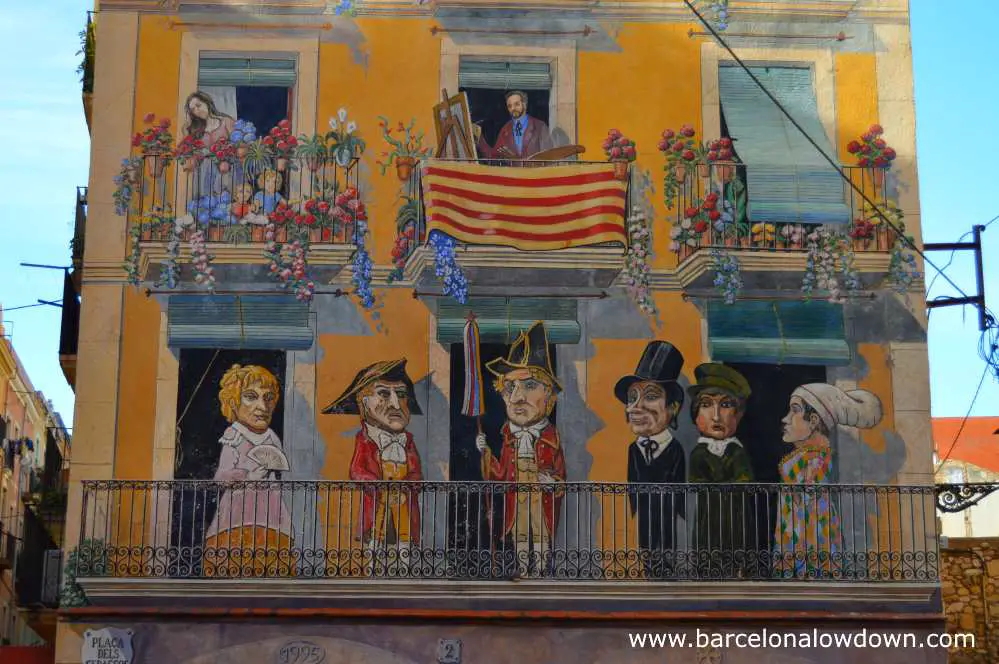
Where to stay in Tarragona
We’ve visited Tarragona 4 times and our favourite place to stay is Hotel Plaça de la Font, which is a small budget hotel right in the centre of the old town in a charming plaza near the main sights.
The rooms are comfortable and spotlessly clean. It’s worth paying the supplement to stay in one of the rooms at the front of the hotel, which have balconies overlooking the plaza.
There’s free Wi-Fi in the rooms and free city maps available at the reception. The staff are friendly, helpful and ready to answer questions.
If you are travelling by car, a public car park is located beneath the square. The entrance to the car park is just a few metres from the hotel.
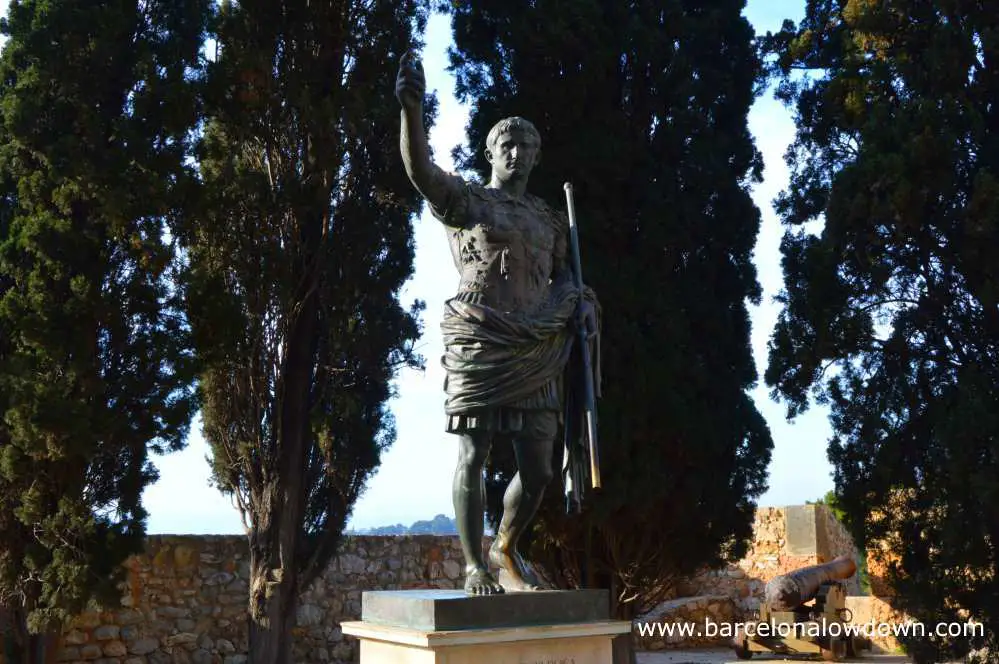
Vegetarian and vegan restaurants in Tarragona
There are 2 vegetarian restaurants in Tarragona: El Vergel and L’Espiga d’Or.
El Vergel (Carrer Major 11) is a 100% vegan restaurant located in the medieval city centre, a short walk from the cathedral. The restaurant is bright airy and relaxed. Food is mostly vegan versions of Mediterranean cuisine. They also serve pressed juices, speciality teas and locally produced vegan wines.
L’Espiga d’Or (Carrer Antoni Rovira i Virgili 17) is a health food store with a small restaurant at the back. The restaurant has some good reviews on Happy Cow but unfortunately we haven’t had the chance to eat there since we have always visited Tarragona at the weekends and the restaurant closes at 2pm on Saturday and doesn’t open on Sundays.
Another good choice is Filosofía Restaurante (Plaça d’en Ripoll 6) which specialises in steaks and burgers but also has a couple of very good veggie burgers on the menu. Ideal if you are travelling with carnivores! The restaurant is deservedly popular and if you are visiting Tarragona at the weekend and plan to eat here you should reserve in advance.
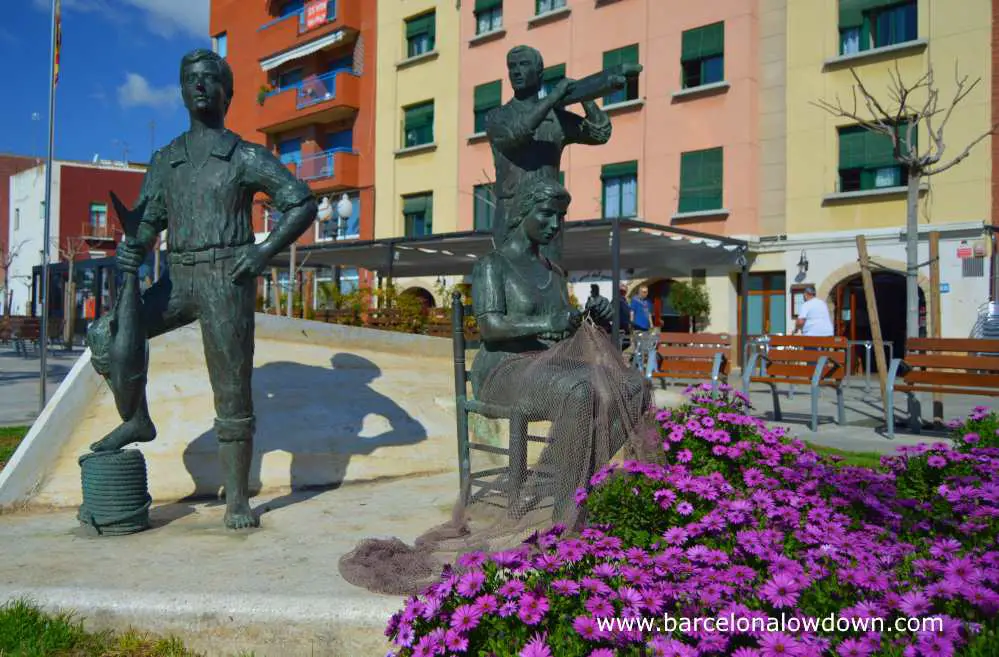
How to get to Tarragona from Barcelona
By car
The journey from Barcelona to Tarragona by car takes approximately an hour and twenty minutes via the C32.
By train
There are frequent trains from Barcelona Sants to Tarragona train station. Regional express trains take approximately one hour; tickets can be purchased at the train station and cost €8.05. There are also commuter trains and long-distance Talgo trains.
The train follows the coast for most of the journey and affords good views of rocky coves and sandy beaches.
Check timetables here
Tarragona train station is a ten-minute walk from the city centre. As you exit the train station, turn right. After a few metres, you will come to a stone staircase on the left-hand side of the road which will take you directly to the Balcó del Mediterrani and Rambla Nova.
There is a taxi rank in front of the station, and all taxis are metered.
AVE high-speed trains from Barcelona to Tarragona
AVE high-speed trains are not a good choice when travelling from Barcelona to Tarragona since instead of stopping at Tarragona train station they stop at Camp de Tarragona which is 16km from the city.
If you’ve already bought your ticket, there are buses and taxis from the train station to the city centre.
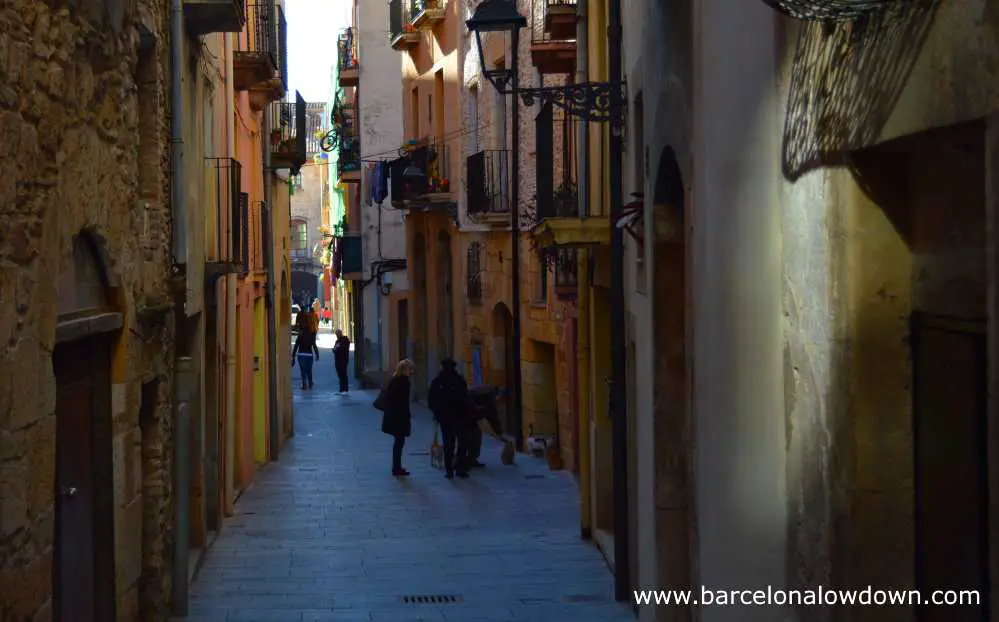
By bus
Alsa run seven buses per day to Tarragona from Barcelona Estacio del Nord and Barcelona Sants bus stations. The journey takes between one and a half hours and one hour forty-five minutes. The fare is currently €8.76.
Busplana runs 14 buses per day from Barcelona airport (terminals T1 and T2) to Tarragona. The journey takes one hour and fifteen minutes and costs €13.
How to get to Tarragona from other parts of Spain
High speed AVE trains take 2 hours between Madrid and Camp de Tarragona station which is 16km outside the city and connected by bus and Taxi.
How to travel to Tarragona from the UK
Ryanair and other low-cost carriers offer cheap flights from the UK to Reus airport which is just 7km from Tarragona.
Hispano Igualadina runs direct buses from the airport to Tarragona. The fare is approximately €3, buses are scheduled to coincide with flights but I recommend that you check to make sure.
Another alternative is to catch the local L50 bus to Reus and travel from there to Tarragona. A taxi from Reus airport to Tarragona will cost around €30.

Tickets and the MHT Pass
Tarragona’s Roman sites, the archaeological museum and some other historic sites are managed by the MHT (Museum of History of Tarragona).
Tickets for the sites can be purchased individually or grouped together in discount passes which can be purchased at the ticket desk of each of the participating attractions.
List of MHT sites in Tarragona:
- Roman Amphitheatre
- Roman Circus and Preatorium
- Archaelogical Museum and Paleochristian Museum & Necropolis
- Local Forum
- Provincial Forum
- Archaelogical Walk
- Casa Castellarnau
- Casa Canals
Ticket Prices
| No. of Sites | Adult | Reduced | Child <16 |
|---|---|---|---|
| 1 site | €3.30 | €1.70 | FREE |
| 4 sites | €7.40 | €3.65 | FREE |
| All sites | €11.05 | €5.50 | FREE |
Map
Zoom in to see the locations mentioned in this post
Carrer dels Cavallers, 14, Tarragona
Tarragona, Spain
Plaça d\\\\\\\\\\\\\\\'en Ripoll 6, Tarragona, Spain
Carrer Antoni Rovira i Virgili 17, Tarragona, Spain
Carrer Major 11, Tarragona, Spain
Tarragona, Spain
Passeig de les Palmeres s/n, 43004 Tarragona, Spain
Tarragona, Spain
Av. Catalunya, s/n Tarragona
Plaça Pla de la Seu, S/N, 43003 Tarragona
Avinguda de Ramón y Cajal, 84, Tarragona, Spain
Tarragona, Spain
C/Lleida, Tarragona
Plaça del Rei, S/N, Tarragona, Spain
Rambla Vella 1C, Tarragona, Spain
Parc de l\\\\\\\\\\\\\\\'amfiteatre s/n, Tarragona, Spain
Tarragona



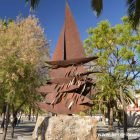

Dear Richard,
We are here in Torredambarra for a week, looking to retire here late this year. We were a bit worried about finding people who speak English. Is that a problem here? Is it possible in Tarragona to find English speaking people? We love the Spanish but don’t speak any Spanish at all as yet. Would love to know what you think. Thanks so much. Sonya
Hi Sonya,
Firstly, congratulations on making such a good choice. I’ve visited Tarragona four times so far (normally staying one or two nights) and really like the city. In fact, if I didn’t live in Barcelona, Tarragona would be at the top of my list of places I’d like to live. In many ways, it’s like a mini-Barcelona but smaller and more laid back.
I don’t think you will have any problems getting by in English in Tarragona while you are learning Spanish. The city receives quite a lot of tourists and other foreign visitors so people working in shops and restaurants will be used to speaking English.
I don’t know whether you are familiar with the website meetup, but I’ve noticed that there are several English language groups listed in the Tarragona area (link). For example, a couple of groups that caught my eye are “Nature Connected Activities in Tarragona” and “Calafell Social and Language Exchange”. Both of those could be good ways of getting to know English speakers while you are still in the early stages of learning Spanish.
Language exchange is a great way of getting fluent quickly while meeting local people and most language schools encourage students to take part. In fact, somewhat ironically, language schools are good places to meet English speakers!
Talking of which, I was in Tarragona for three days between Christmas and New Year and noticed that there’s an International House school on Rambla Nova.
International House is one of the largest language schools in Spain and has a very good reputation. Although it was quite a long time ago now, I studied at one of their schools here in Barcelona and was very happy with both the school and its teachers (website).
Excellent report; thank you for developing and posting it. My family (3 of us) plan to visit Tarragona on a Thursday Oct 17, 2019. (Thanks for the tip about Camp Tarragona Train Station). We would like to visit a winery (Terra Alta DO) can you offer some suggestions and importantly how we would travel from center of town to the site.
Also, in France, Monday is not as particularly good day to visit a French City — most private shops are closed. Do we have to be concerned about a particular day the Tarragona shops are mostly closed.
Thanks for your advice in advance.
Hi Chuck,
Thanks for your comment, I’m glad you found the blog useful.
RE. the trains, it’s definitely better to catch the Regional Express instead of the high-speed AVE trains which are more expensive and, by the time you’ve caught the bus into the city centre, actually end up taking longer!
I haven’t done a winery tour yet, although it’s been on my to-do list for some time.
I’ve just had a quick google and found this site which has information about visitable wineries in the Terra Alta DO area.
Unfortunately, I think you’ll find it hard to get to any of them by public transport.
Have you thought of renting a car for the day?
If so then you could combine a visit to one of the wineries with Miravet or the Ebro Delta as a day trip from Tarragona.
Actually, I’ve just spent the last half hour browsing the wineries mentioned on the site linked to above, this place looks fantastic.
Back to answering your questions ;-)
In Tarragona (and most towns in Spain) shops and markets are closed all day on Sundays. The only exceptions being bakeries and small convenience stores.
Some small family-run restaurants close on Sundays, others on Mondays, it’s not a problem though, there will still be plenty of restaurants open on both days.
One thing that you should bear in mind is that, outside the summer season, most museums close on Mondays. In Tarragona, the Amphitheatre, Roman Circus, and Archaeological museum will all be closed on Mondays during October.
Lots and lots of thanks for the help I will come next week to see all the beauty of Barcelona and Tarragna.
Good night
You’re welcome. Have a great time!
Next week I will be in Tarragona and wanted to know where it Plaça dels Sedassos relative to the Rambla.
Thanks in advance
Hi Anat,
From Rambla Nova walk north along Carrer de Sant Augustí. When it crosses Rambla Vella the road changes name to Carrer del Portalet and then a bit further on it changes name again to Baixada de la Misericòrdia.
Shortly after the road changes name to Baixada de la Misericòrdia and just before it curves round to the right you will see Plaça dels Sedassos on your left.
Where you can see the home from the painting and where the statue of Emperor Augustus
Relative to the balcony.
Thanks in advance
Hi Anat,
The painted house with the mural is in Plaça dels Sedassos square which I’ve now added to the map at the end of the article.
The statue of Emperor Augustus is on the left hand side about a third of the way along the archaeological walk of the Roman walls.
The entrance to the Roman walls and the Balcó del Medeterrani are both labelled on the map.
Hope this helps.
Thanks for the quick and gentle answer about the painted building and how far from the Rambla. And thank you again
Good night